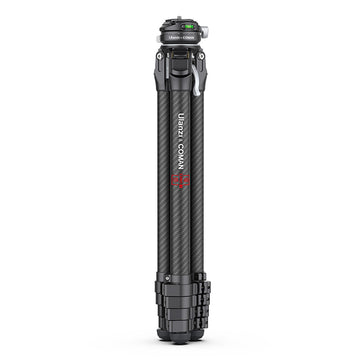Discover the Ultimate Lightweight Tripod for Your Travel Photography Adventures!
Travel photography is an exhilarating way to capture the world around you, but to truly elevate your craft, having a reliable and lightweight tripod is essential. Whether you’re shooting breathtaking landscapes at sunrise or intimate portraits against vibrant city backdrops, a good tripod provides the necessary stability to enhance photo quality and keep your shots sharp. It allows you to experiment with long exposure shots, helps in framing your images perfectly, and significantly reduces camera shake. In this article, we aim to guide you through the process of selecting the best lightweight tripod for your travel needs, ensuring you are equipped to capture memories that last a lifetime.

Key Features to Consider in a Lightweight Tripod
When searching for the ideal lightweight tripod, several essential features should be at the forefront of your considerations. The weight of the tripod is crucial, as it directly impacts portability—something every traveler values. The material used in construction plays a significant role in both durability and weight; common materials include aluminum and carbon fiber. Additionally, the height range of the tripod and its stability are vital for accommodating various shooting scenarios. Portability features, such as how compact the tripod can become when packed, are also key for travel ease. Each of these features contributes to the overall performance and usability of the tripod, making it an indispensable tool for any traveling photographer.
Weight and Portability
The significance of weight in a travel tripod cannot be overstated. A lighter tripod is easier to carry, especially during long hikes or when navigating bustling streets. However, there is a delicate balance between sturdiness and lightweight design; a tripod that is too light may not withstand wind or uneven terrain. When I traveled to the mountains with a friend, her lightweight tripod made it much easier to trek up steep paths, but we soon realized that it struggled a bit with stability during windy conditions. Thus, finding a tripod that offers the best of both worlds—lightweight yet sturdy—is paramount.
Material and Build Quality
The materials used in a tripod's construction greatly affect its performance and longevity. Aluminum is a popular choice due to its affordability and reasonable weight, but for those who prioritize both weight and durability, carbon fiber is the go-to material. Carbon fiber tripods are often lighter and can absorb vibrations better, making them ideal for long exposure photography. During a recent trip to a bustling city, I noticed that the carbon fiber tripod my friend used provided excellent stability on uneven surfaces, allowing for clearer night shots without the worry of shake.
Height and Stability
Height adjustability is another critical factor to consider. A tripod should be able to extend high enough for your needs, whether you’re shooting over crowds or capturing sweeping landscapes. Stability features like leg locks and center columns also play a vital role; quality leg locks can prevent the legs from slipping or collapsing during use. On a recent beach trip, I was grateful for the sturdy leg locks on my tripod as I adjusted its height to capture the sunset without any wobbling.
Additional Features to Enhance Functionality
Aside from the primary features, look for extra functionalities that can enhance your shooting experience. Quick-release plates make it easy to mount and dismount your camera, while bubble levels help ensure your shots are perfectly aligned. Compatibility with various camera types is also essential, especially if you switch between different systems or lenses. I once borrowed a tripod from a friend that had a quick-release mechanism, which made transitioning between shots seamless during an outdoor event.
Choosing the Right Tripod for Your Photography Style
Not all photographers have the same needs, so it’s essential to choose a tripod that complements your specific photography style. For landscape photographers, height adjustability and stability are paramount, while portrait photographers might prioritize flexibility in angles and quick adjustments. Wildlife photographers often require tripods that can handle variable terrain and offer quick setup times—especially when capturing spontaneous moments. When shooting in urban environments, a compact tripod is beneficial, allowing you to navigate crowded spaces easily. My friend, who specializes in street photography, often opts for a smaller tripod that fits in her backpack, enabling her to set up shots quickly without drawing too much attention.
Tips for Using a Tripod While Traveling
Using a tripod effectively while traveling can greatly enhance your photography. Start by practicing setting up your tripod quickly; this ensures that you’re ready to capture fleeting moments. Adjust the legs for stability, especially on uneven ground, and always check that your camera is securely mounted before taking shots. To minimize movement, use a remote shutter release or the camera's timer. Lastly, consider how you pack and transport your tripod; many tripods come with carrying cases that make it easy to take them on the go. During my travels, I learned to secure my tripod to the outside of my backpack, which saved space and made it easily accessible when I needed it.
Finding Your Perfect Lightweight Travel Tripod
In summary, selecting the right lightweight tripod for your travel photography adventures is crucial for enhancing your overall experience and the quality of your images. By considering key features such as weight, material, height, stability, and additional functionalities, you can find a tripod that meets your specific needs. Remember, your tripod is an investment in your craft, so take the time to assess your individual preferences and shooting style. With the right tripod in hand, you’ll be well-equipped to capture stunning photographs that tell the story of your travels.








